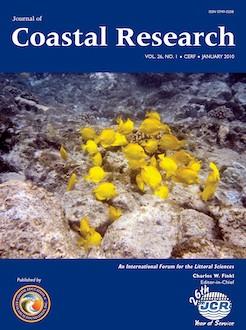The evolution of the coast of Hawke's Bay, New Zealand, and its erosion problems have been governed by multiple factors, including its tectonic setting with an earthquake in 1931 that altered land elevations along its shore, ranging from a 2-m uplift at its north end to 1-m subsidence at its south. Human environmental impacts have also been important, including the deforestation of the watersheds of rivers and the mining of gravel and sand from their channels, having decreased the sediment supplies to the beaches. Significant erosion has occurred at the south end of the Hawke's Bay shore, attributed in part to its subsidence in 1931, together with the net northward longshore transport of the beach sediment that is greater than the volumes being supplied by the rivers, the beach-sediment budget being significantly “in the red.” Midway along the Bay's shore, the construction of the Port of Napier's breakwater in 1887–90, extending seaward from the Buff Hill headland within that city, is interpreted by some investigators to have been the cause of the erosion experienced at Westshore, a development located immediately north of the breakwater. The assumption has been that this erosion was the result of the breakwater having blocked the northward longshore transport of sediment that formerly had bypassed Bluff Hill, this being an example of down-drift beach erosion. However, a reexamination of the history of the Port's development, the resulting shoreline changes, differences in beach gravels on the shores north and south of Bluff Hill, as well as other evidence, support the conclusion that the breakwater was not the cause of the erosion; instead, the impacts to Westshore at the time of the breakwater construction can be attributed primarily to a series of major storms, which produced erosion at a number of sites along the Hawke's Bay shore. There has been minimal erosion at Westshore since the completion of the breakwater a century ago, its northward extending arm acting to shelter the development from the waves of major storms. Investigations by coastal scientists and engineers of the Hawke's Bay coast, together with a comprehensive beach-survey monitoring program, support its sound management based on an understanding of the multiple factors that are important to its responses during storms, and to its long-term changes.
How to translate text using browser tools
1 January 2010
Shoreline Evolution and Management of Hawke's Bay, New Zealand: Tectonics, Coastal Processes, and Human Impacts
Paul D. Komar
ACCESS THE FULL ARTICLE

Journal of Coastal Research
Vol. 2010 • No. 261
January 2010
Vol. 2010 • No. 261
January 2010
breakwaters
gravel beaches
jetties
river watersheds
Sediment budgets
wave climates




